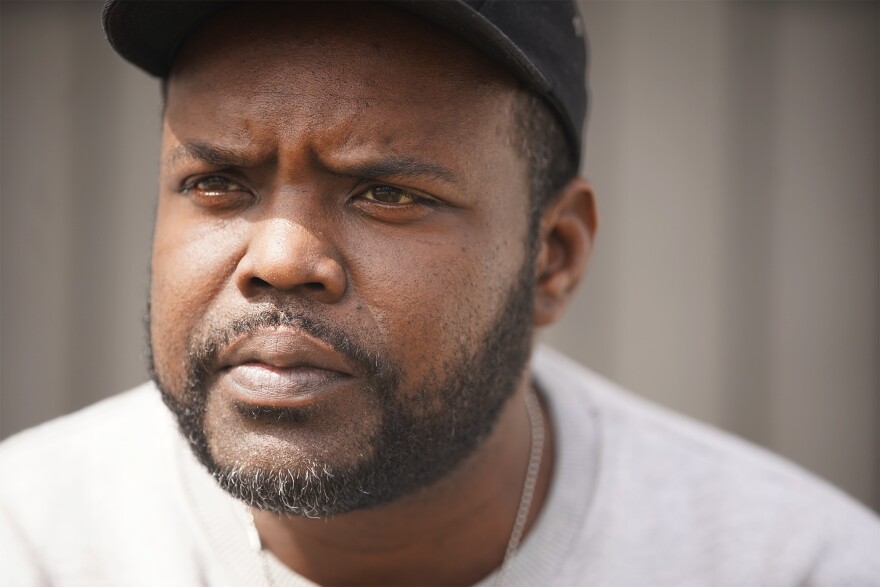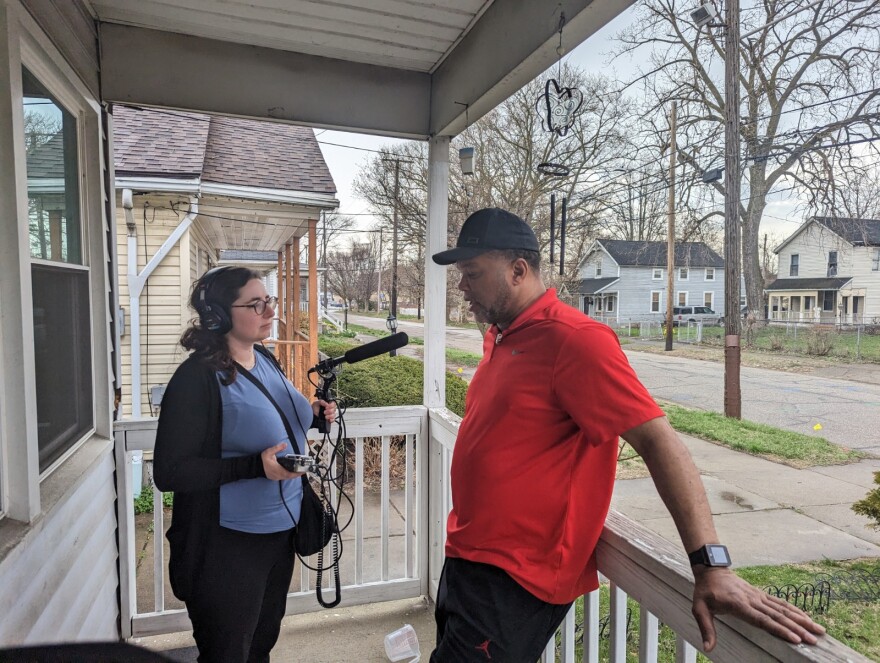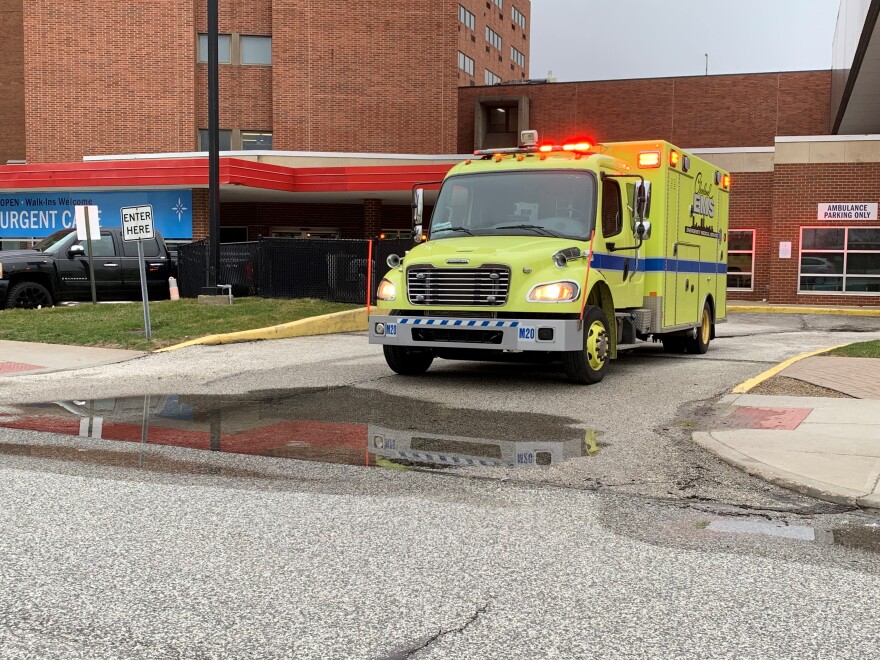A church parking lot was the last place Earl Lewis expected to be shot. On a crisp February morning, a bullet hit him in the back as he stood next to his car after a friend’s memorial service at a church on Cleveland's East Side.
“It was like a movie. Once I felt myself getting shot, a course of adrenaline got to rushing, I hopped up,” he said. “I helped another victim that got shot with me into my truck, and I drove to ... what I thought to be a hospital.”
Lewis, 40, said he rushed to what he thought was the nearest emergency room at St. Vincent Charity Medical Center — a safety net hospital that has for years served the people of Cleveland’s Central neighborhood. Lewis was not aware the ER was shut down a few months earlier. When Lewis arrived, he found a sign stating the ER is closed and a building staffed by only a security guard.
“I'm banging on the window. I'm like, ‘Hey, we're shot! We're victims! Please help me!’ he said. “He says, ‘Drive to the nearest hospital.’ I'm thinking I'm at the nearest hospital. That was... so devastating to me as a survivor trying to hold on to my life.”
"I said, 'Can you summons an ambulance for me or call them or do you have a walkie-talkie?'" Lewis said. "Please, please don't let me die. Help me."
The security guard did call an ambulance and medics took Lewis to MetroHealth. Both he and the other victim survived.

Sisters of Charity, the health system that ran the ER at St. Vincent Charity Medical Center, said via a spokesperson that it's "deeply concerned about the level of trauma and gun violence that far too many Clevelanders experience," and says it has tried to communicate the news of the closure.
But records from Cleveland’s emergency medical services show that Lewis is not the only person who doesn’t know the emergency room is closed. Many people are still showing up at the site of the former ER in need of medical help.
In the less than five months after the ER closed on Nov. 11, 2022, ambulances have been dispatched there 59 times — sometimes responding to St. Vincent more than one time on the same day, EMS records show.
Since the closure, people have been transported to other hospitals for everything from chest pain and falls to hemorrhages, difficulty breathing and penetrating trauma like gunshot wounds, the records show.
At least four men have gone to the former ER with gunshot wounds since it closed, including a 30-year-old man who was shot three times in the chest on April 16, an Ideastream analysis of city documents showed. Medics took him to Metro in critical condition, an EMS union spokesperson said.

Many of the calls for help come in on weekends or outside of normal work hours — when a new urgent care, which opened on the site of the former ER, is closed. But even when it's open people have been taken by squad to different hospitals for falls and illness, according to the records.
“That’s because people don’t know the ER is closed,” said Antoine Tolbert, who goes by Chairman Fahiem, a leader of a grassroots community advocacy group called New Era.
“There's no connectivity in our communities,” he said. “There is no effective line of communication between establishment institutions and residents so residents always are on the tail end of things when things are subject to change at the drop of a dime.”
"People don't know the ER is closed"
Hospital officials said they’ve tried to communicate information about the closure. News outlets covered it, the hospital said it engaged “neighborhood ambassadors” to reach people and Cleveland's Ward 5’s councilmember Richard Starr said it was discussed at eight community meetings and was in the ward newsletter.
But Chairman Fahiem said the communication strategy didn’t meet people where they are.
“In Cleveland — where the functional illiteracy rate is 67% — people aren't reading,” he said.
Lewis, who has lived in Central for most of his life, said it was not obvious to him even as he drove up that the ER was closed.
The new urgent care is open Monday through Friday from 8 a.m. to 5 p.m., according to the hospital’s information line. A security officer is posted there every day around the clock to make sure people can reach Cleveland EMS and police if needed, the hospital said.
In early April, the former emergency room still had the red banner over the awning reminiscent of emergency departments, but instead, the signage said “Urgent Care Open.” The signs on the medical campus that directed people to the ER when it was open had been taped over.
There is also a call box mounted near the entrance that people can use to call 911. A sign next to the call box said the emergency department closed as of November, and people can't come here for an emergency.

He doesn’t know if it was the adrenaline, the fear or the fact that he was beginning to lose consciousness, but Lewis said he didn’t notice the call box when he was trying to get help.
Hospitals that serve lower-income communities are struggling
Dr. Charles Garven, chief medical officer for the Sisters of Charity Health System, the nonprofit that runs St. Vincent, isn’t unsympathetic to Lewis and the people of Central.
“There is a huge chunk of me that wishes that we could do everything for every person, every time,” he said.
The medical system is shifting its focus to provide outpatient care options that address the social determinants of health, Garven said. The hospital's psych ER remains open. But Lewis and Chairman Fahiem say the need for emergency care in Central is acute.
“You're surrounded around lower-income project housing,” said Lewis. “This is the wrong area to shut down the hospital. We need two of them.”
There are two level one trauma centers — University Hospitals and MetroHealth — equipped to treat traumatic injuries like gunshot wounds within 15 minutes of where Lewis was shot in the 6500 block of Quincy Avenue. UH Rainbow Babies & Children’s Hospital provides trauma care to children. But Lewis said in the moment all he could think was to get to the closest ER — and for years that was St. Vincent’s about six minutes away.
St. Vincent’s emergency room was never the appropriate ER for gunshot wounds, a hospital spokesperson said. Even before the ER closed, someone with a traumatic injury would have been transported to a different hospital.
But Lewis said that had he arrived at an open ER there would have been a medical professional to help stabilize him — or at least provide some comfort.
Instead, Lewis said he begged the security guard for help.
"He said, 'We're not allowed to touch you.' So I said, 'Please don't let me die.' I said, 'Do you have a family? Do you have a son at home?' I said, 'If you have anybody you care about, please hold pressure on my wound.'"
The hospital said security officers are not trained in trauma care and are not clinicians.
Instead, another man from the funeral, Timothy Davis, who grew up with Lewis on the same street and who saw him get shot and then drive away, pulled up. He'd been driving around looking for Lewis and guessed where he was headed, he said. Davis, whose wife is a nurse, put pressure on Lewis' bullet wound and kept him calm until the ambulance arrived.

The other man Lewis had brought to the hospital continued to bleed in the vehicle until the ambulance arrived minutes later, Lewis said.
People who show up at the closed ER are quickly taken to the appropriate hospital for care, according to the hospital.
“If you show up here, we're still going to get you to the right place,” Garven said.
But that puts pressure on medics, said Cleveland paramedic Timothy Sommerfelt, of the EMS employee union CARE Local 1975.
“We went from having St Vincent's handle about 5% of our EMS volume to now transporting patients who show up at St. Vincent unaware that it's closed,” he said. “That's a huge change for us. This hospital, they opened... before the Civil War and now it is closed, and we've basically abdicated that workload to the EMS.”

Public health officials said they recognize it’s a big change, but emphasize the importance of looking at the big picture when making public health decisions.
Statistically, living near a hospital hasn’t been shown to improve health, Garven said. The hospital has been there for 170 years yet Central residents can expect to live 20 years less than their neighbors in Cuyahoga County, he pointed out.
“There's nothing about how close you live to the hospital that affects those health outcomes,” Garven said. “Whether you saw a primary care doctor in the past 12 months does. That affects people's health outcomes. And that's really what we care about. And that's what people told us, and that's what we're working hard to respond to.”
The need for care is there, but how to pay for it?
The hospital said before the ER closed, they hired a consultant to talk to neighbors about what their health care needs were. People told them they wanted better access to outpatient care for dentistry, eye care and pregnant women and infants, Garven said.
But Chairman Fahiem said he thinks many residents were missing from those discussions.
“I can guarantee you that during those listening sessions, the demographic that's the most impacted by gun violence and trauma and physical harm was not at that table,” he said.

Although it’s counterintuitive, Loren Anthes, a visiting fellow at the Center for Community Solutions, said there are benefits to having fewer emergency rooms. People with life-threatening emergencies are more likely to survive when doctors that treat them are well-practiced, he said.
“When you look into the statistics... with the increase of density of trauma centers, you saw mortality actually go up significantly,” he said. “The reason for that is when you have a really specialized service, it matters how many people are receiving which service and how often they perform that service because of the experience curve.”
But when everyday emergencies happen Chairman Fahiem said it’s important to have ERs close by.
“I see both perspectives on that because an investment and being preventative... can pay off in the long run. But for those among us who already have these ailments... they're past the point of prevention," he said. "When we're talking about a community that does not have a grocery store, how can we have a serious conversation about being preventative?”
It’s difficult to provide care to poor people because of the way the U.S. funds health care, Anthes said.
“When you look at which hospitals are being closed and why you typically see those hospitals that have worse overall payer mixes, in other words, more public, more uninsured being the ones that closed," he said. "That most certainly has an element to it that expresses itself in terms of racial disparities and in terms of neighborhood makeup.”
Federal tax documents show how difficult that model is to maintain financially. The hospital system operated at a loss each year from 2017 to 2019 — before the pandemic arrived in 2020. The Center for Community Solutions says nearly three-fourths of people in Central are covered by Medicaid.
The St. Vicent ER closure is reflective of a national decades-long trend, according to a study published in the medical journal PLOS One. Similar emergency departments across the country — especially those more likely to serve the poor — have been closing for years.

Dr. Vikas Saini, President and CEO of the Lown Institute, a think tank that studies hospital systems, said St. Vincent is top 5% nationally for Social Responsibility — meaning they serve people of different races and income levels.
“I think what's interesting to me about Saint Vincent Charity Medical Center is that they do really very well on our measures of clinical outcomes and of value, which is to say avoiding unnecessary treatments and, you know, being cost efficient in what they do,” he said.
In a just system, hospitals like St. Vincent would be the model, not the ones to have to downsize, he said.
Lewis’ sister, Tonya Lewis, said she wants the ER to reopen for lots of reasons.
“There is so many apartments around here that what if a parent was in dire need to run their child to the hospital from one of these apartments or homes right here, and they had no access to medical help?" she asked. "That's sad.”
Until it does, she said the community will be hurting.





